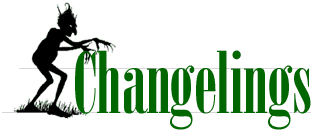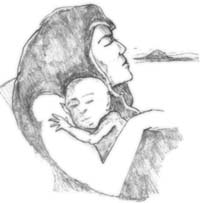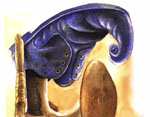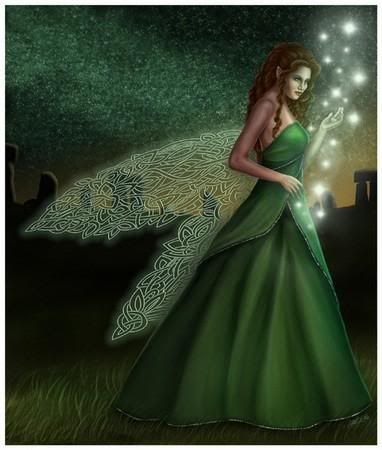Blog post #5
11/19/10

It seems that fairy women all over Ireland found birth a difficult experience. Many of the fairy children died before birth and those that did survive are often stunted or deformed (Celtic Mythology).
Some adult fairies have no wish to keep them. They will try to swap them with healthy children who they steal from the mortal world. The creature that was left in place of the human child was generally known as a changeling. The changeling possessed the power to work evil in a household. The ones most at risk are those who have not been baptized or one who is overly admired.
The changeling is noticed more because of their temperament. Babies are generally joyful and pleasant, but the fairy substitute is never happy, except when some mishap befalls on the household.
A changeling can be one of three types: actual fairy children; senile fairies who are disguised as children or, inanimate objects, such as pieces of wood, which take on the appearance of a child through fairy magic. This latter type is known as a stock (Irish Fairies).
This fairy will display very dark eyes, which betray a wisdom far older than its apparent years. Changelings display other characteristics, usually physical deformities, among which a crooked back. About two weeks after their arrival in the human household, changelings will also exhibit a full set of teeth, legs as thin as chicken bones, and hands which are curved and crooked as birds' talons and covered with a light, downy hair (Irish Fairies).
No luck will come to a family in which there is a changeling because the creature drains away all their good fortune. Thus, those who are cursed with it tend to be very poor and struggle desperately.
One positive feature this fairy may demonstrate is an aptitude for music. As the changeling grows older, they may take up an instrument, often the fiddle or the Irish pipes.

www.costumenetwork.com
www.artshole.com

www.orkneyjar.com
"Celtic Mythology: Fairies." Timeless Myths .com. 6 March 2005. Web. 19 November 2010.
<http://www.timelessmyths.com/celtic/faeries.html>.
"Irish Fairies" IrelandsEye.com. Web. 19 November 2010.
http://www.irelandseye.com/animation/explorer/leprechaun.htm
http://www.irelandseye.com/animation/explorer/leprechaun.htm





















